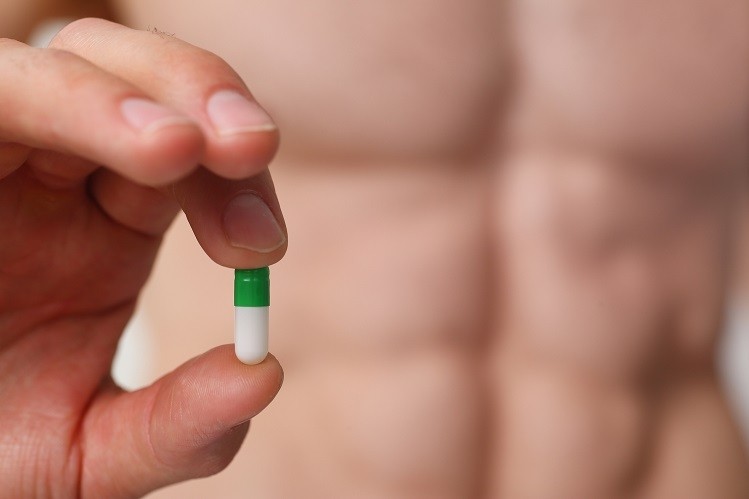From the Editor's Desk
Can a sports nutrition product be too good?

The effects of most dietary supplements are subtle, long term or prophylactic in nature.
How to measure long term effects
For example, how do you measure a feeling of greater positivity, which might be an endpoint for a mood support ingredient? There are validated mood scales and so forth, but these rely on questionnaire answers and don’t approach the hard data nature of a blood test or other biomarker.
Or how about those ingredients, like omega-3s, that have risk-lessening effects that have been validated through clinical research? That research looks at wide-scale population effects, and tells a compelling story in that realm.
But not everyone responds the same. Until we have a validated way to tell who will respond well to omega-3s supplementation and who won’t, it’s really a matter of faith that by using these ingredients you have lessened your own personal risk of developing certain forms of cardiovascular disease.
Most immediate meaure: winning or losing
The efficacy balancing act is an especially delicate one with sports nutrition. In sports nutrition, we cross the boundary into hard and fast measurements. What could be more stark than winning or losing? Or shaving 10 seconds off of a cycling time trial? Or adding a bodybuilding contest-winning extra inch on one’s biceps?
The best athletes are always looking for a leg up on the competition. We would all like to believe that this is achieved via harder work, greater commitment and an unbending will. I think there’s no doubt this forms most of the foundations of success.
But then there is that extra special edge. Shaving 0.5% off the time trial time for a racing cyclist can be a winning difference. Being able to sustain 5% more work can be a decisive edge for a weightlifter training for a physique competition. The temptations to grab for an edge via an ingestible product can be great, especially when all other avenues of improvement have been exhausted.
What athletes have been wiling to risk
Outright doping with obviously illegal substances has been one way that athletes have sought this edge. Most notoriously in cycling, the substance EPO was used to boost red blood cell counts and therefore the blood’s ability to transport oxygen. Lance Armstrong got to an elite level in professional cycling because he was talented, he was tenacious and he worked extremely hard. He was a winner because he used EPO.
But this is not just a case of excesses in cycling. Numerous NFL players have failed drug tests for various performance enhancing substances (many of them blaming supposedly tainted supplements). And international tennis superstar Maria Sharapova recently returned to competition after serving a suspension for using meldonium, a drug not approved in the US that is used to boost blood flow in heart patients. Sharapova had not previously been reported to have heart problems.
How prevalent is doping, really? A study done among Canadian university athletes concluded “doping is neither prevalent nor worth the risk for these CIS athletes. There also appears to be an opportunity for pharmacists to play a more prominent role in providing advice on medication use to high-performance athletes.”
But (no offense intended) the Canadian Interuniversity Sport Union is very small potatoes among sports certifying organizations. The competition is low key and not highly funded. So, while these athletes are mostly likely highly committed to their individual pursuits, there is not a lot of money being made from the competitions in terms of ticket sales, coaches’ salaries, sponsorships, etc.
More than 50% of athletes shown to have cheated
The picture seems different at higher levels. According to recent study, the prevalence of doping in international track and field competitions is much higher than even the World Anti Doping Agency will admit. After what to some appeared to be a suspiciously long and convoluted publication history, a study was released in 2017 that said 57% of athletes doped at two international competitions in 2011, a far higher percentage than what WADA had reported.
So, it’s obvious that there is a demand among athletes and those who advise them for substances that can boost their performance. If those are not on the WADA banned substances list, that’s great. If they are, then some athletes seem bound and determined to run that risk.
Dodgy sports nutrition ingredients
In the sport nutrition realm, there have been some companies and formulators who have been willing to run similar risks. Steroids have of course been part of what could be loosely called ‘sports nutrition’ for many years, stretching back to the first BALCO scandal and the high profile professional baseball players who were implicated. But we’ll leave those aside here, as they are clearly drug ingredients, and have been dealt with via the Designer Anabolic Steroid Control Act.
But following on from anabolic steroids, which even dedicated users in the bodybuilding community admit are tricky to use without unwanted side effects, there came the Selective Androgen Reuptake Modulators (SARMs), substances that could mimic the effects of steroids while sidestepping some of their side effects.
Are these substances legal ingredients for dietary supplements? Who cares! At least that seemed to be the stance taken by the makers of some of the dodgier sports products who rushed to put offerings on the market that contained these ingredients. A bill has been introduced in Congress to give FDA similar authority over these ingredients.
Some stimulant ingredients have found a home the in the gray penumbra of the sports nutrition realm. Most notoriously there was DMAA, which was purportedly traced to a geranium species. But there have been others, such as DMBA and BMPEA, which purportedly could be found in a species of orchid.
What’s the answer?
Sports nutrition as a category holds great promise both for industry growth and for positively affecting the lives of consumers. But it also contains within it the potential seeds of its own destruction, in that there will always be a temptation to cater to the ‘win at any cost’ mentality.
Legally marketed and manufactured dietary supplements cannot contain any of the ingredients mentioned above. In an area fraught with peril, NutraIngredients-USA will attempt to shine a light on the path that leads toward the high road. There are many solid ingredients in this space, with solid science behind them, and we will continue to highlight those, as we did with our first Sports Nutrition Summit, a joint effort with the International Society of Sports Nutrition, which concluded last week in San Diego. Stay tuned for details on next year’s version.
The bottom line: There is no quick answer here. Human nature dictates that some people will always tend to cheat. It will be an ongoing conversation, one that NutraIngredients-USA intends to be at the forefront of.
















